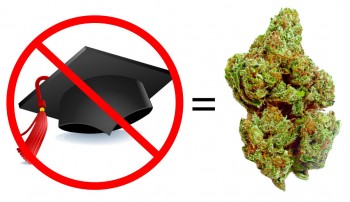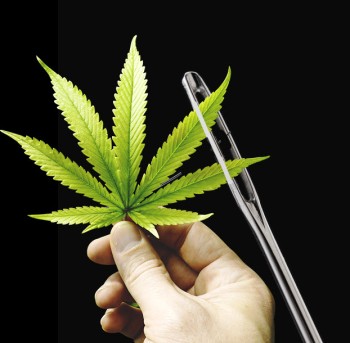Officials Warn About Fentanyl-Laced Weed—the Myth that Refuses to Die

In a new press release, the Washington State Department of Health shared its fears about fentanyl overdose and blamed cannabis dispensaries for the threatening situation. They maintained that since cannabis can be sold when laced with the lethal drug, dispensaries need to do better in protecting cannabis users.
However, journalists and cannabis researchers are still at odds about the possibility of a fentanyl-weed overdose and if it exists. They also question if the source of information is legitimate and if it isn’t just a myth.
The discussion is taken seriously because no one wants to put themselves at risk while using any substance. But is this fentanyl-laced weed story a fact? We have to start with the concerns of the state and their fears for their citizenry.
The state’s concerns with fentanyl-laced weed
State officials assert that cases of fentanyl-related overdoses are rising across the Washington district. They also request that people take naloxone if they want to consume drugs purchased at pharmacies or marijuana dispensaries. They should also share the information with friends and family who may do the same.
The fentanyl-laced marijuana myth has also been described by “Buzzfeed” as one of the most brutal urban legends relating to America’s overdose crisis. They believe that since federal and state officials perpetuate the “Myth,” it will make it harder for people to heed the advice.
But at this point, one must remember that states do not randomly call for a change in consumption patterns of any substance unless they have irrefutable proof of the damages it causes.
Some cannabis consumers who have been using the substance for a long time are conflicted about how individuals will lace weed with such a deadly drug. Most worrisome is that the drug is even more expensive (per gram) and more challenging to obtain than cannabis.
The state is also telling its citizens to “Assume” that whatever substance they purchase at a pharmacy or a marijuana dispensary may be laced with fentanyl.
The negative impact of fentanyl-laced weed on individuals
Preliminary data from the state reveals that about 418 deaths caused by overdose in 2021 significantly increase from the 378 deaths recorded in 2020. Out of the 418 overdose-related deaths in 2021, 46% (this amounts to 191) of the deaths are caused by fentanyl.
Many of the victims are people under the age of 30, young people with a beautiful future ahead of them who had their life cut short by fentanyl. So the state has every reason to be concerned, especially since fentanyl-laced weed is taking the lives of its young and vibrant youths.
This data on the rate of death overdose further buttresses the point that individuals who utilize fentanyl and other kinds of opioids should also use naloxone.
But is marijuana to blame for these sad figures?
Why marijuana shouldn’t be labeled lethal with fentanyl
So last month, officials in the state of Georgia declared a warning that fentanyl overdose is dangerous. They tried to blame marijuana this time, making it seem like marijuana is responsible for ALL the fentanyl-laced weed.
They announced that all recreational use of narcotics substances such as cannabis should be labeled a “Serious” threat to one’s life. Other organizations and state institutions issue the same warnings. Some of such institutions include The Camden County Emergency Management Agency and Police departments in other local cities.
Fentanyl is an effective drug that stops a person from breathing when it is taken. With just two milligrams of the drug (depending on the body’s size, previous usage, and tolerance level), the person can stop breathing.
However, the Drug and Environmental Agency says that there is no evidence supporting the claim that deaths from overdose are a result of marijuana. If there are no reports of such deaths, why is marijuana getting all the blame for such overdose deaths?
Marijuana shouldn’t receive the same kind of labeling as fentanyl because it has many positive and medicinal benefits that people need. The focus on marijuana as the sole culprit for this situation is another targeted attempt at making it seem like the substance is a threat to users. This is why experts see it more like a myth than a truthful portrayal of the role marijuana plays in such stories.
Wait a minute, where did these stories originate from?
Well, the fentanyl-cannabis myth gardened a lot of momentum in 2017. That year, the coroner at Hamilton County in Ohio, Dr. Lakshmi Sammarco, announced that she had “seen” a fentanyl and cocaine mixture as well as a marijuana fentanyl mix.
Interestingly, the follow-up conversation with Dr. Sammarco revealed something entirely different from her initial statement. She was mandated to admit that she had not seen any tangible evidence that suggests that fentanyl is laced with marijuana in reality. In actuality, she was only repeating what Senator Rob Portman had said without any credible sources.
Additional reporting in the Cincinnati Inquirer also discovered evidence that fentanyl-laced marijuana is merely a “Wild speculations.” So with these facts against fiction, it is evident that cannabis was made out to blame the impact of fentanyl on young people.
Bottom Line
For many years, marijuana received bad press for being the choice of “Drug” for criminals and other people who commit social vices. Therefore, it is not uncommon to find state officials pointing an accusing finger at cannabis even when it isn’t true.
There is still no evidence showing that cannabis dispensaries promote marijuana laced with fentanyl, and most experts still believe it is a myth. Regardless of its status as a myth or not, some truths remain clear;
-
Fentanyl is a lethal drug, and it shouldn’t be laced with weed.
-
Marijuana is a helpful recreational and medicinal substance that doesn’t make people mix it with fentanyl.
Most of the fentanyl-laced cannabis news seems to be much more fictional, with little to no evidence backing up some of the stories. States will need to take on more research before making their conclusions.






